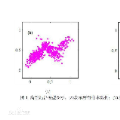Color modelling and extraction is an important topic in fashion, art, and design. Recommender systems, color-based retrieval, decorating, and fashion design can benefit from color extraction tools. Research has shown that modeling color so that it can be automatically analyzed and / or extracted is a difficult task. Unlike machines, color perception, although very subjective, is much simpler for humans. That being said, the first step in color modeling is to estimate the number of colors in the item / object. This is because color models can take advantage of the number of colors as the seed for better modelling, e.g., to make color extraction further deterministic. We aim in this work to develop and test models that can count the number of colors of clothing and other items. We propose a novel color counting method based on cumulative color histogram, which stands out among other methods. We compare the method we propose with other methods that utilize exhaustive color search that uses Gaussian Mixture Models (GMMs) and K-Means as bases for scoring the optimal number of colors, in addition to another method that relies on deep learning models. Unfortunately, the GMM, K-Means, and Deep Learning models all fail to accurately capture the number of colors. Our proposed method can provide the color baseline that can be used in AI-based fashion applications, and can also find applications in other areas, for example, interior design. To the best of our knowledge, this work is the first of its kind that addresses the problem of color-counting machine.
翻译:色彩建模和提取是时装、 艺术和设计中的一个重要主题。 推荐者系统、 颜色检索、 装饰和时装设计可以受益于颜色提取工具。 研究显示, 建模颜色可以自动分析和/ 或提取, 是一项艰巨的任务。 与机器不同, 颜色感知, 虽然非常主观, 但对人类来说要简单得多。 可以说, 色彩建模的第一步是估算项目/ 对象的颜色数量。 这是因为色彩建模可以利用颜色数量作为更好的建模的种子, 例如, 使颜色提取更具有确定性。 我们在此工作中的目标是开发和测试能够计算服装和其他物品的颜色数的模型。 我们提出一个新的颜色计数方法基于累积颜色直观图, 这与其他方法相比。 我们建议的方法是使用高山混合模型(GMM)和K- Means作为获取最佳颜色数的基础, 除了另一种方法, 还要依靠深度学习模型的另一种方法之外, 我们的颜色建模、 KMe- Me 以及内部应用方法可以精确地测量我们所使用的所有颜色模型。




